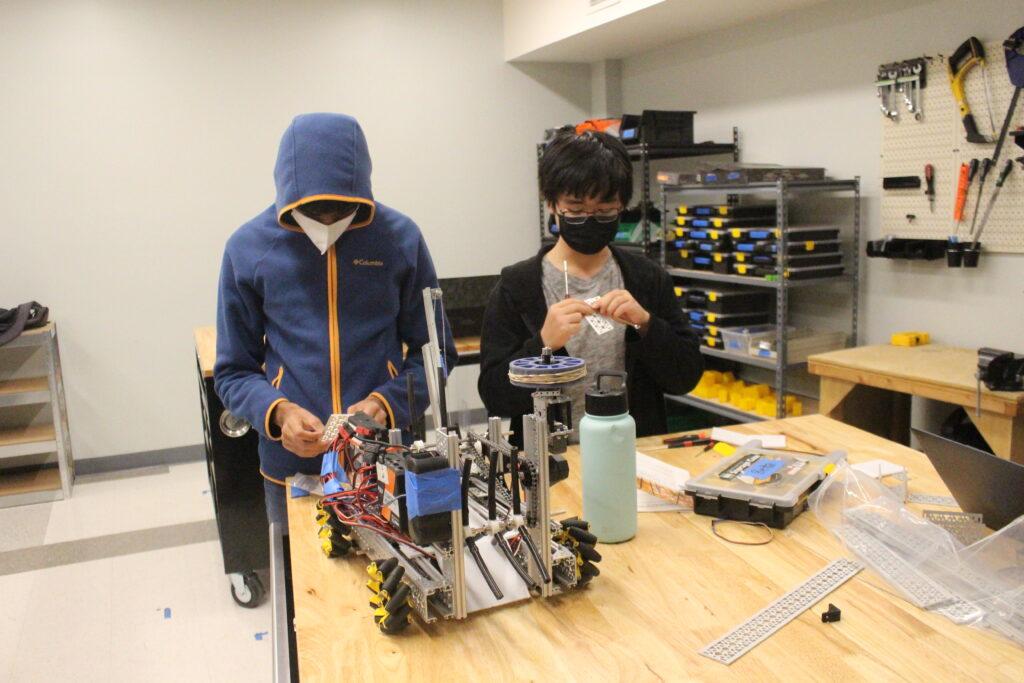Three, two, one.
A crackling trumpet sound effect blared from a laptop in the corner of the robotics room to alert students of the countdown. On a 12 by 12 foot tiled arena, two small robots started moving autonomously, whirring around the field and scurrying to complete various tasks for points.
The Mechanical Science and Engineering Team (MSET) Robotics Club held an in-house scrimmage on Nov. 14 for their FIRST Tech Challenge (FTC) program to determine which team would host the upcoming Saratoga Qualifier, an annual tournament put on by the club for local teams.
The scrimmage consisted of three matches between two 15-member teams, Bettafish and Jellyfish, with the Bettafish team winning 3-0. Both teams had been preparing since Sept. 18, the start of the season, for this event. Because the winner would have priority in competing at regional qualifier tournaments, another team, the Cuttlefish, did not participate as they had already secured a spot at a qualifier because of their members’ seniority.
“It was pretty good to see the culmination of all our building and programming,” sophomore Bettafish team captain Maithreyi Bharathi said.
Bharathi cited her team drivers’ practice as a factor in their outstanding performance. Because they had finished their robot a week beforehand, they had ample time for sophomore drivers Rishab Melkote and Jarrett Singh to familiarize themselves with the controls and learn how to communicate with each other, she said.
For senior Jellyfish team captain Daniel Jiang, the lack of driver practice was one of the main reasons their performance during the scrimmage suffered.
“In general, we needed more time practicing driving a fully functioning robot,” Jiang said. “It was apparent during the matches that we didn’t get enough. The communication and synergy between the drivers just weren’t there.”
For both teams, the scrimmage presented a good opportunity to set goals after watching the robot in action. Bharathi said that throughout the scrimmage she found several technical improvements her team could make to their robot, such as increasing the speed of their lift and efficiency of their intake, as well as paying more attention to a larger scale to decrease the number of minute errors.
On the other hand, Jiang said he wanted to focus more on the organization and management of his team instead of just the robot’s design. For example, a major issue during the Jellyfish matches was having to restart the robot because of different configurations in the software that stemmed from a lack of coordination between members, according to Jiang.
“The robot worked mostly how we wanted it to during the scrimmage, but our organization and driving wasn’t up to par,” Jiang said. “Looking forward, those are definitely the things I want the team to focus on. Having the team go through it really helped us narrow things we wanted to focus on throughout the season.”


























